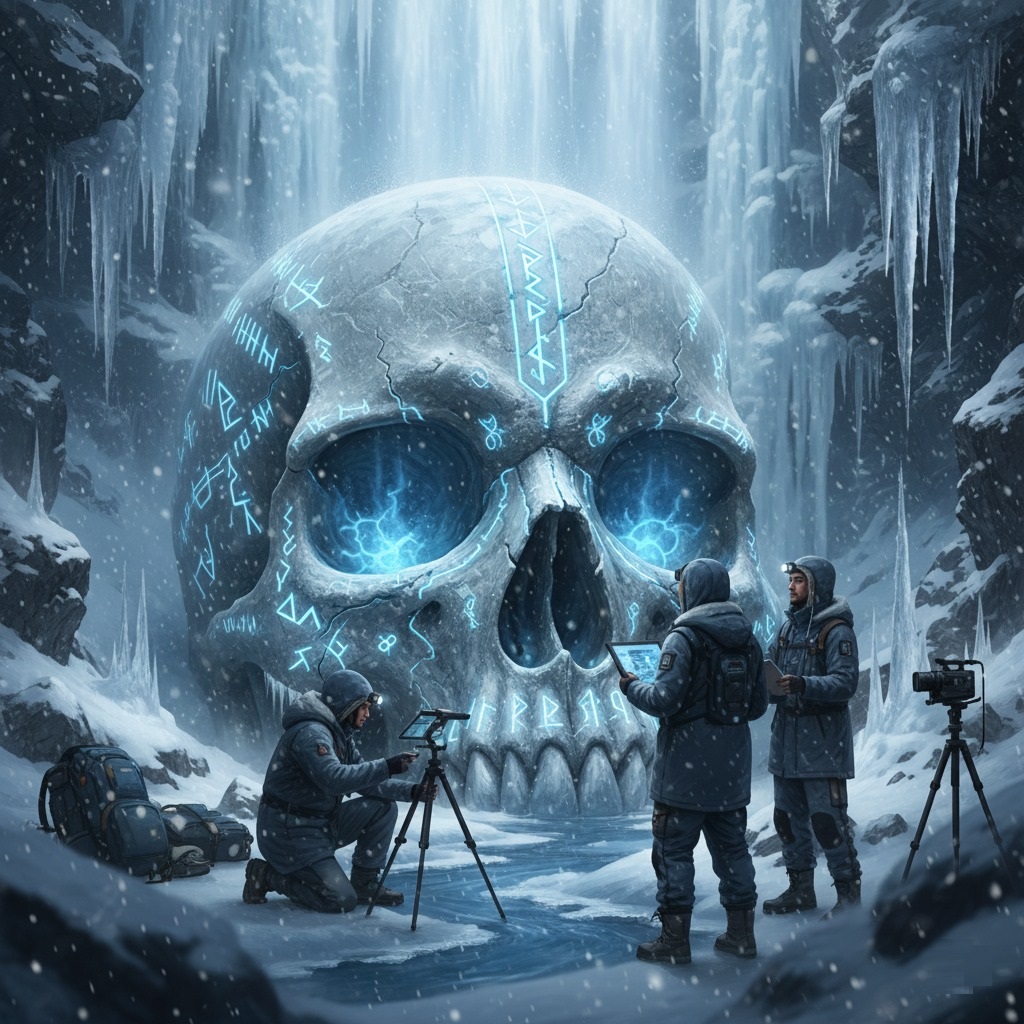The Whispering Glacier of Svalbard: Unearthing the Runic Skull

The year is 2042. Climate change, a relentless sculptor, had carved new landscapes in the Arctic, revealing secrets once locked away for millennia. Dr. Aris Thorne, a leading archaeo-linguist from the University of Cambridge, adjusted his thermal goggles, the biting wind of Svalbard a familiar companion. His team, a small but dedicated cohort of specialists, had been dispatched to a newly exposed glacial valley, a place satellite imagery had flagged for anomalous thermal signatures and unusual geometric formations.
For weeks, their work had been grueling, mapping the meltwater channels and cataloging ancient botanical specimens. Then, one frigid afternoon, beneath the roar of a newly formed waterfall — a cascade born from the retreating ice sheet — a glint of azure light caught the eye of Anya Sharma, the team’s geophysicist.
“Dr. Thorne! You need to see this,” her voice crackled over the comms, a mixture of awe and urgency.
What they found defied immediate classification. Resting in a shallow, half-frozen stream was an immense skull, not of bone, but of a dark, obsidian-like stone, intricately carved. Its surface pulsed with a soft, internal luminescence, emanating from an array of glowing blue runic symbols that snaked across its temples, jawline, and forehead. The light was strongest in the eye sockets, creating an illusion of conscious, watchful eyes. Icicles, sharp as ancient spears, framed the discovery, testament to the extreme conditions that had preserved it.
“This is… impossible,” Thorne whispered, kneeling, his gloved fingers hovering inches from the warm, almost vibrating stone. His expertise was in ancient Norse and Proto-Germanic scripts, but these runes were unlike anything he had ever encountered. They hinted at a language far older, perhaps even pre-human, or from an unknown civilization that predated recorded history.
Dr. Chen, the team’s lead archaeologist, meticulously set up their LiDAR scanners and ground-penetrating radar. “The thermal signature is consistent, Aris. It’s radiating heat, very subtly. And the material… it’s not organic, not conventional stone.”
Over the next few days, the team worked around the clock, battling the relentless elements. They established a temporary shelter, its walls humming with heaters. As Thorne painstakingly photographed and documented each symbol, a pattern began to emerge. The runes, though alien, seemed to tell a story, or perhaps, contain a vast amount of stored information. The skull wasn’t merely a sculpture; it was a conduit, a repository.
Anya’s seismic readings began to show strange reverberations deep beneath the skull, as if it were merely the apex of something far grander. “There’s a structure down there,” she reported, her voice hushed. “Vast. Geometric. And it’s connected to this… energy.”
One evening, as the aurora borealis danced across the polar sky, casting an ethereal green glow, Thorne felt a subtle shift. The runes on the skull brightened, their blue light intensifying. A low hum, almost imperceptible, began to emanate from the ground. He realized then that the skull wasn’t just emitting light; it was responding. The glacial valley, the specific alignment of the waterfall, the very magnetic field of the Earth in this ancient place – it was all part of a larger, intricate system.
The “Whispering Glacier” wasn’t just a geographical feature; it was a guardian. The runes weren’t just text; they were keys. And the skull, an artifact of unimaginable age, was beginning to awaken. The true implications of their discovery in Svalbard were only just beginning to unfold, promising to rewrite not just human history, but perhaps, the very understanding of life on Earth. The world held its breath, waiting for the whispers from the glacier to become a roar.
